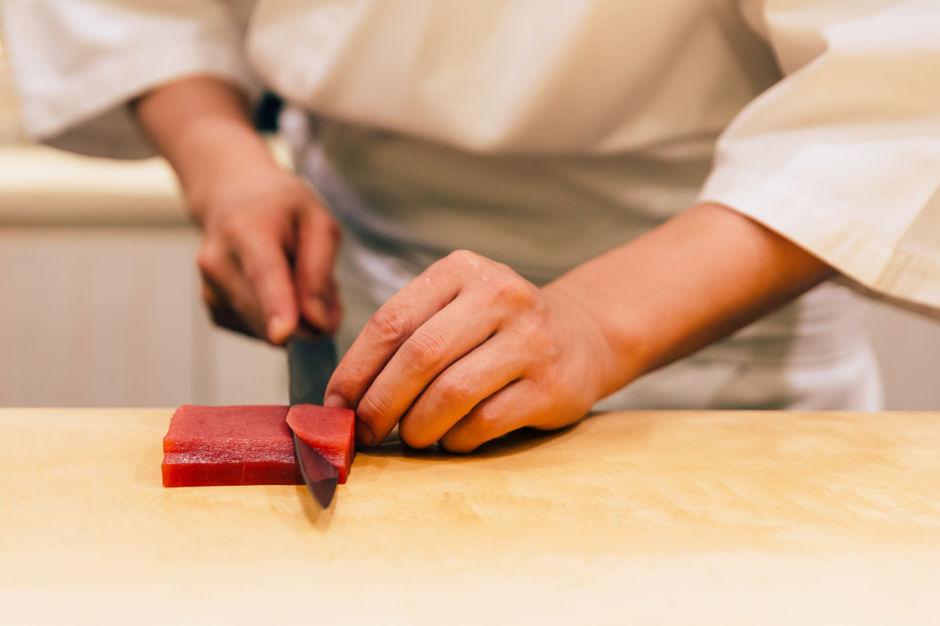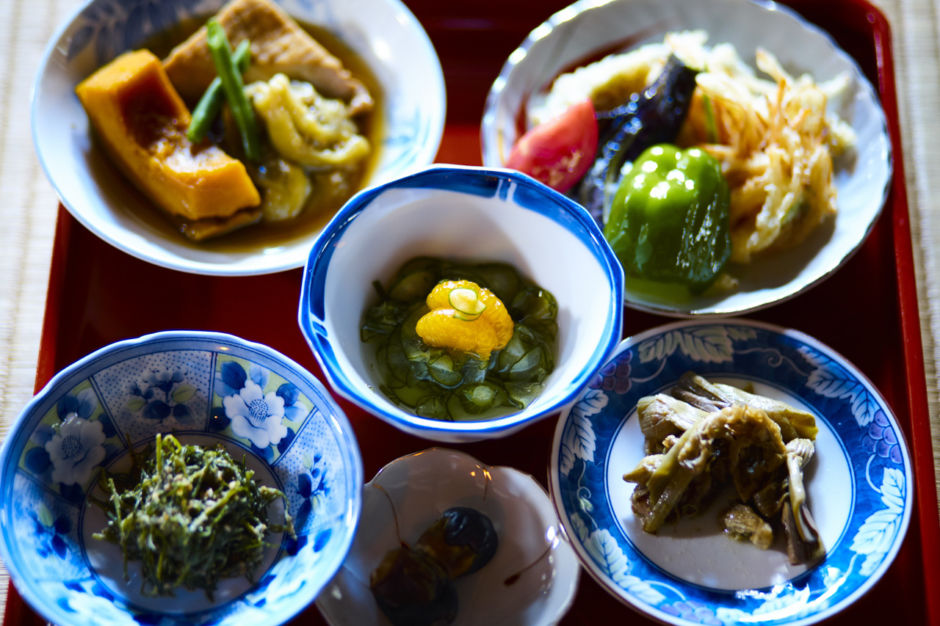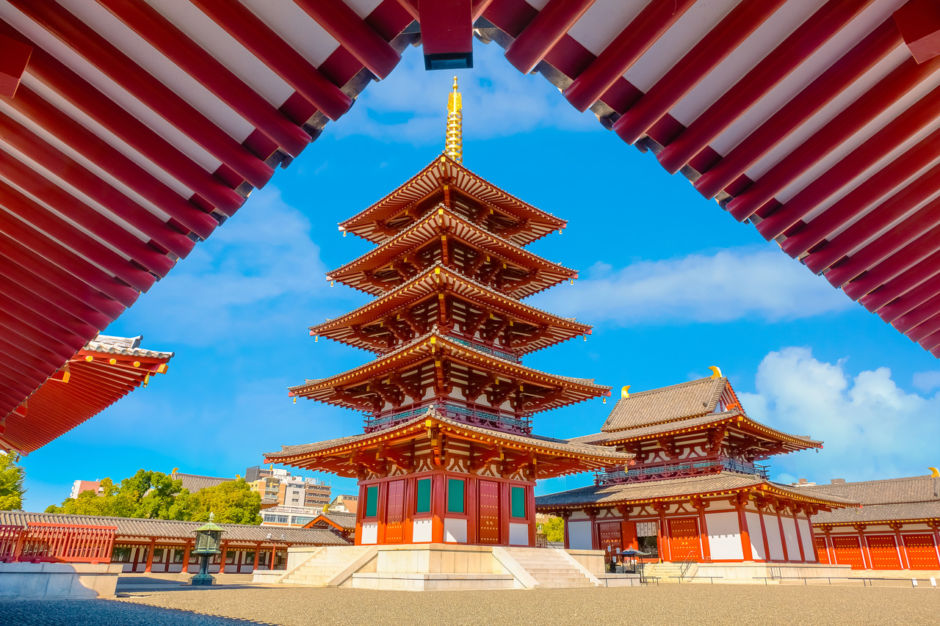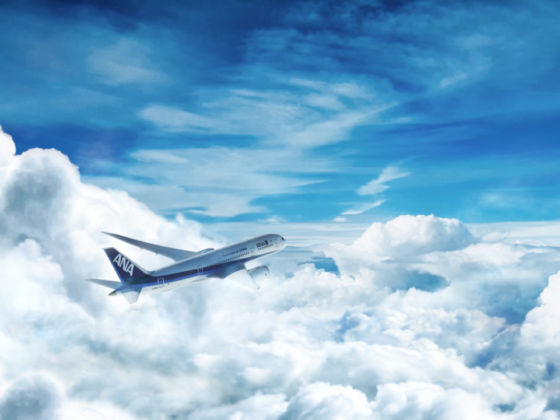The Japanese have an unshakable dedication to perfection. Whether creating the best whiskey in the world or being awarded the most Michelin stars for any city on the globe, it’s the hard-working individuals of Japan that underpin the country’s success. Families dedicate their lives to honing skills worthy of passing on to the next generation, creating centuries of continued mastery and distinction.
For the visitor, whether it’s souvenir shopping for hand-crafted knives, observing the elegance of the tea ceremony, or experiencing omotenashi at a traditional ryokan, a trip to Japan will introduce you to a world of quality and beauty. Fortunately, for those flying with ANA (All Nippon Airways), the journey to excellence begins as soon as you take your seat on the plane.
Designed by the 2020 Olympic stadium architect Kengo Kuma, ANA’s new first- and business-class cabins braid Western and Asian design, a seamless flow inspired by Japan’s high-end hotels. First-class passengers can relax in “The Suite,” featuring 43” monitors and reclining beds; meanwhile, business-class guests will have plenty of space in “The Room,” with wide sofa seats, natural sunrise lights, and bespoke bedding. Both come with your own sliding door or seat divider for extra privacy.
And that’s just the beginning of your flight — here’s how you’ll experience Japan’s culture of excellence for the rest of your trip, both in the air and on the ground.
1. Cuisine: ANA’s taste of Japan

Photo: ANA (All Nippon Airways)
Miles away from the cliched image of airplane food, on All Nippon Airways the in-flight meals are prepared by a team of hand-picked chefs known as The Connoisseurs. Each first- and business-class menu item — varying by season and route — is developed in collaboration with a renowned chef, showcasing the specialty they’ve honed over many years.
From the delicate kaiseki meals of Shinji Ishida (owner of revered restaurant Nogizaka Shin) to the stunning desserts of French patisserie expert Pierre Hermé, dishes are paired with wines selected by Olivier Poussier, crowned “Best Sommelier in the World.” In flying ANA, you’ll get an elevated Japanese dining experience before your feet even hit the streets.
2. Culture: tea ceremony

Photo: Shutterstock/I am Corona
Fly to: Tokyo
A delicate and elegant tradition dating back over a thousand years, the Japanese tea ceremony is the performance of perfection. Balancing bitter matcha (powdered green tea) with simple, seasonal wagashi (tea-sweets) it’s best — or, at least, most iconically — experienced in the peaceful settings of Happoen Gardens, a romantic getaway sitting right in the heart of Tokyo’s Little Milan.
Surrounded by ancient bonsai, the Edo-era teahouse and “garden of eight views” will provide the setting you’re likely looking for as you enjoy the contrasting flavors, breathe in a sense of tranquility, and admire the subtle art of tea. All without leaving the city.
3. Cuisine: 3-Michelin-star sushi

Photo: Shutterstock/Artit Wongpradu
Fly to: Sapporo
Settle into one of the eight sought-after seats of Sushi Miyakawa, and prepare to be guided through the tastes of Hokkaido. In traditional omakase style, guests relax as a series of courses — always featuring seasonal vegetables and fish — are prepared before them as the chef sees fit. Omakase literally translates to, “I’ll leave it up to you.”
Delicate pickles, fresh sushi, and shuko (small dishes) are paired with sake for a two-hour tour of the season, all with up-close-and-personal seats to observe the decorated chef at work.
4. Omotenashi: ryokan stay

Photo: Shutterstock/Jo Panuwat D
Fly to: Tokyo
Revered for their omotenashi — a tradition of exceptional hospitality — Japan’s ryokan, or traditional inns, are a rare escape from the modern world.
Gora Kadan, set in the forests of Hakone southwest of Tokyo, is a tranquil oasis, complete with dedicated staff, kaiseki meals, and private onsen, or hot springs. Once the summer villa of an Imperial family, the carefully maintained grounds welcome those out for an evening stroll with views of Fuji-Hakone-Izu National Park in the distance. With every need catered to, the opportunity to truly relax is a luxury worth savoring.
5. Cuisine: shojin ryori

Photo: Shutterstock/Ito-Iki
Fly to: Osaka
An ancient Buddhist cuisine following the dharmic tradition of nonviolence, shojin ryori favors seasonal vegetables with delicate flavors. Originally served in temples and known as “devotion food,” a myriad of small vegetarian or vegan dishes are prepared by specially trained chefs known as tenzo.
The meals are created using the “rule of five” to balance the key flavors and colors needed to create a perfectly harmonized dining experience. Temples like Ekoin, in the mountain town of Koya south of Osaka, offer the rare chance to experience the cuisine in its rightful setting.
6. Architecture: Japanese temples

Photo: Shutterstock/Cowardlion
Fly to: Osaka
One of the oldest temples in the country, Osaka’s Shitennoji is a beautifully bright example of Japanese architecture. The temple was built in 593, and while the original buildings have since been destroyed by fire, the current structures were painstakingly rebuilt following the original 6th-century designs.
When here, ascend the five-story pagoda, explore the treasure hall’s unique collection, and stroll along the walkways of the main hondo to gain a true sense of the skills of Japanese architects — as well as the painters and craftspeople who continue to bring their designs to life.
7. Craftsmanship: handmade knives
Fly to: Tokyo
Gleaming against a spinning whetstone, the handcrafted knives of KAMATA Hakensha in Tokyo’s Kappabashi district are positioned carefully by the third-generation owner. Forming neat rows on wooden shelves, the shop’s selection is vast, with everything from simple paring knives to specialist single-bevel sashimi knives each awaiting its future owner.
As well as sharpening the dulled blades of visiting chefs, the Kamata family share their secrets in hugely popular workshops, leaving students with a worthy skill and their own personal whetstone.
8. Spirits: sake

Photo: Shutterstock/Shaiith
Fly to: Hiroshima
One of eight breweries found on Hiroshima’s Sakagura-dori (sort of a sake avenue, if you will) in the sake district of Saijo, Kamoizumi Brewery is the place to try this Japanese tipple of choice. Decades ago, when most of its competitors were concentrating on sanzoshu — a type of sake quickened with distilled alcohol — Kamoizumu was pioneering a modern-made yet traditional sake called junmai ginjo-shu.
Considered the home of modern sake, the brewery’s success is largely put down to the area’s high-quality water and some fierce innovation. Tours guide visitors through the brewing process, with tastings available alongside a sake-infused menu of homemade local dishes. Most say the drink is full-bodied, tawny, and smooth, with a hint of umami at the finish line.
9. Cuisine: Kobe beef

Photo: Shutterstock/Littlesam
Fly to: Osaka
Serving this world-famous variety of wagyu beef for over a century, Restaurant Mouriya has the goal of giving diners the strength for tomorrow. Relying on their carefully managed ranch, they ensure their Tajima-breed cows are treated to — and meet — the highest of standards.
Their dedication results in the beautifully mottled and tender meat sought after by beef aficionados across the planet. Guests are given a ringside seat to the chef’s preparations — a hot, steel plate sealing in flavor — before their chance to savor simple-yet-satiating dishes made from some of the best Kobe beef in the world.
10. Design: traditional Japanese gardens

Photo: Shutterstock/Andreas H
Fly to: Kanazawa
Considered one of Japan’s three most beautiful landscape gardens, Kenrokuen Garden in Kanazawa is a picture-perfect example of meticulous Japanese design. Originally the outer grounds of the nearby castle, it’s home to teahouses, plum groves, ponds, and carefully manicured scenes. Kenrokuen translates to “garden of the six sublimities,” reflecting the essential elements needed for a truly complete garden: antiquity, abundant water, space, seclusion, broad views, and artificiality.
Featuring plants carefully selected to create seasonal changes, the garden’s spring blossoms, fall leaves, and winter snowfalls are renowned across the country. Nowhere but Japan does excellence in so many ways.


